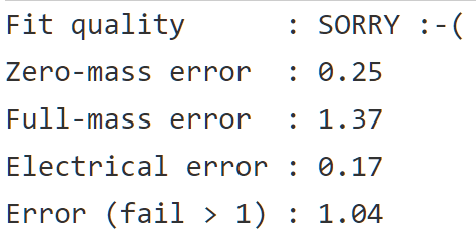Hello,
icbcodc https://www.avnirvana.com/threads/s...circuit-and-sound-card-output.6860/post-50908 gave me the idea to measure one of my loudspeakers with this method and to try the Speakerbench control tool : https://speakerbench.com/apps/app1 .
Here is the result: " Fit quality: Sorry :-( "
I attach the zma files and the corresponding JSON file. The test can last one to two minutes.
A 40 g mass was used because it roughly corresponds to the Mms I always got with my old measurements.
It seems that I have to use a lower mass.
I put a voltage of 0.316 V corresponding to -10 dB FS ? Is it right ?
With this method, the T° has no influence on the calculation of Vas but the atmospheric pressure (mB) does.
Next measurements next week!
icbcodc https://www.avnirvana.com/threads/s...circuit-and-sound-card-output.6860/post-50908 gave me the idea to measure one of my loudspeakers with this method and to try the Speakerbench control tool : https://speakerbench.com/apps/app1 .
Here is the result: " Fit quality: Sorry :-( "
I attach the zma files and the corresponding JSON file. The test can last one to two minutes.
A 40 g mass was used because it roughly corresponds to the Mms I always got with my old measurements.
It seems that I have to use a lower mass.
I put a voltage of 0.316 V corresponding to -10 dB FS ? Is it right ?
With this method, the T° has no influence on the calculation of Vas but the atmospheric pressure (mB) does.
Next measurements next week!
















